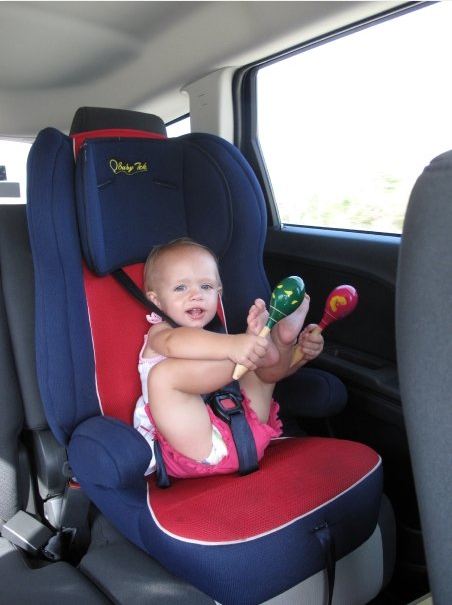The chance of small children being seriously hurt, even killed, during a collision when not securely fastened into an appropriately-sized baby seat is five times as great as when they are secure.
Paramedics notice on a daily basis how irresponsible adults allow their children to sit in the front seats, or even stand between the front seats. This situation can lead to your child’s death or at least, very serious injury.
Collisions occur in a split second and, in some cases, are unavoidable. It is sad to know that serious injuries could have been so easily avoided.
What happens to your child if you are forced to brake sharply? He or she will smash into the object in front of him or her like a projectile.
At the time of a collision, a person’s body continues to travel at an average of double the speed of the vehicle in which the person is travelling once the vehicle stops. That is the speed at which your child could hit the windscreen or dashboard of the vehicle. In some cases the child is flung right through the windscreen. Obviously very serious injuries occur even if the baby or child survives it.
A collision frequently happens at such a high speed, that there is no time for the child to try to hold onto something to save them. Added to that, compared to adults, a child of 4 years and younger is top-heavy in relation to his body mass. Neck muscles are not yet very strong. In serious collisions, injuries affecting the neck and head are very common in the case of children.
A baby seat should be secured according to manufacturer’s specifications at all times. Babies over one year should preferably be kept in the back seat in view of the fact that the front seat can act as a buffer (manufacturer specifications).
However, it is absolutely essential that children continue to be kept in a baby seat, or, when older, that they use a seatbelt while sitting on a specially-designed booster seat, which allows for the natural curiosity of a child to be satisfied while the parents drive around.
Most new vehicles are equipped with an airbag in the front passenger seat. If the person using that seat is shorter than 140 centimetres in height, then the airbag should be disconnected. Airbags have been designed for adults and can cause serious death or injury to children during a collision. Vehicle seats are primarily designed for adults; therefore it is important to make use of specially designed support equipment for children less than 12 years of age. Children up to the age of 4 must always be put in a baby or child’s seat.
WHEN BUYING A BABY SEAT:
Test the baby seat to see how it fits and to check if your baby will sit comfortably. Remember a side impact collision is likely to cause very serious repercussions, so select a model which has additional side protection to cater for this possible risk.
REDUCTION IN THE RISK FACTOR:
According to known guidelines, children are five times safer sitting in the rear of a vehicle. It is better for the child to sit behind the driver so that the driver can see him in the rear view mirror.
Should you see a child being transported in an unsafe manner do not try to handle the situation yourself. Simply contact the Metro Police or Road Traffic Authority and give them details of the vehicle registration number and the place when the incident took place.
Protect our children, they are our future!
ER24
Also view:
Child restraints and Road Safety
How safe is your child passenger during Child Protection Week?
